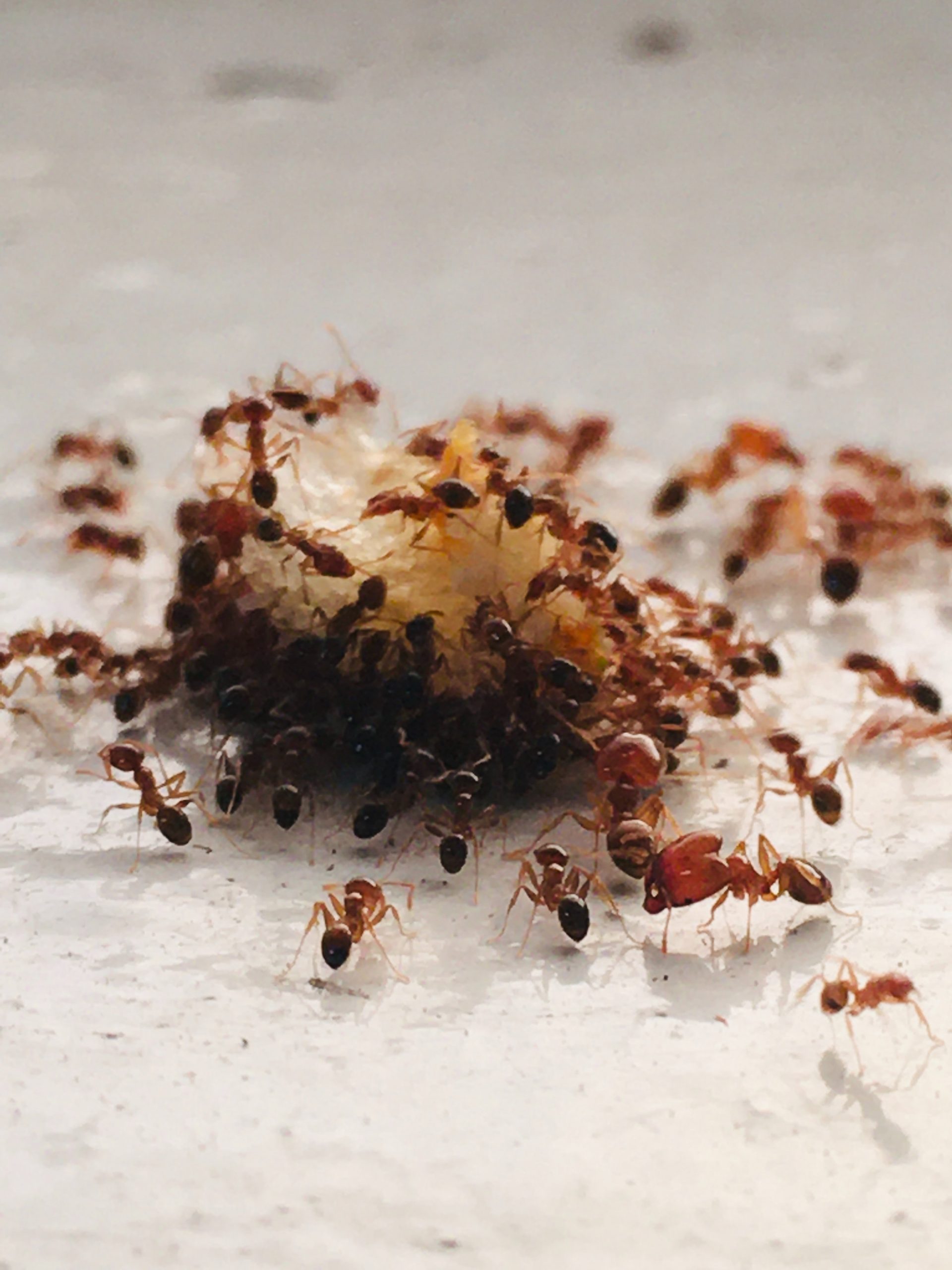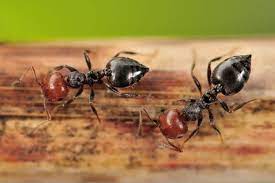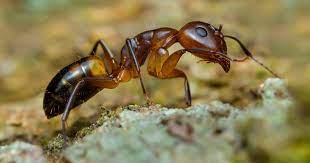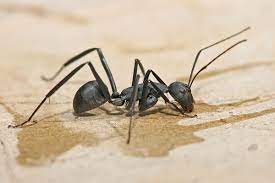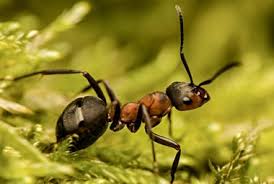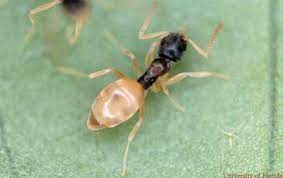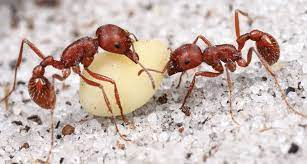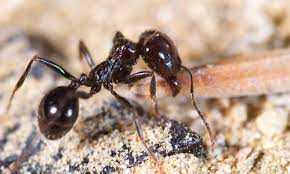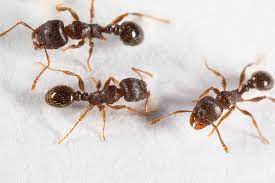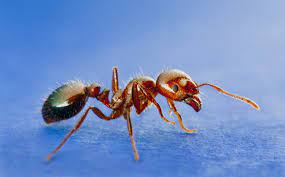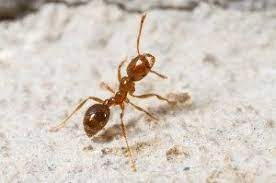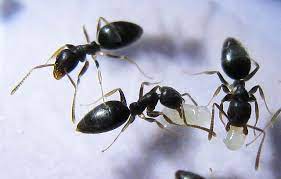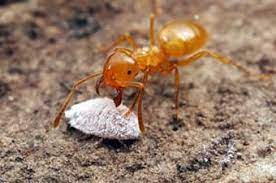Facts, Identification & Control
Ant control can be difficult, but there are some things you should know about how ants’ behavior can lead to big headaches for you and your home:
- Entry: Ants can enter through even the tiniest cracks, seeking water and sweet or greasy food substances in the kitchen pantry or storeroom areas.
- Scent trails: Ants leave an invisible chemical trail which contains pheromones for others to follow once they locate the food source.
- Nest locations: They can nest about anywhere in and around your house; in lawns, walls, stumps, even under foundations.
- Colony size: Colonies can number up to 300,000 to 500,000, and whole colonies can uproot and relocate quickly when threatened.
- Colony Lifetime: A colony can live a relatively long lifetime. Worker ants may live seven years, and the queen may live as long as 15 years.
- Do-it-yourself ineffectiveness: Most do-it-yourself ant control approaches kill only the ants you see. Some truly effective treatments can penetrate and destroy nests to help prevent these pests from returning. Also, home remedies don’t account for the fact that different kinds of ant infestations require different treatments.
Ant Life Cycle
The ant life cycle has four distinct and very different life stages: egg, larvae, pupae, and adult. This is known as complete metamorphosis. It generally takes from several weeks to several months to complete the life cycle, depending upon the ant species and environmental factors.
Eggs A female ant that successfully mates with a male ant will become a queen ant that lays eggs. Fertile queens select a sheltered place to begin a nest (colony) and begin laying eggs. Ant eggs are very small – only about a half of a millimeter in diameter. The eggs are also oval, white, and transparent.
Larvae After about 1-2 weeks in the egg stage, a grub-like, legless ant larvae hatches. This stage has a voracious appetite, and the adult ants spend much of their time feeding the larvae with food and liquids they digest and regurgitate.
Pupae After the larvae molt and shed their skin, they change into the pupal stage. Pupae appear somewhat like adults except their legs and antennae are folded and pressed against the pupal body. Initially, ant pupae are usually white but slowly become darker in color as they age. Depending upon the ant species, pupae may be housed in a protective cocoon.
Adult Once the pupal stage is complete, the adult ant comes on the scene. At the time of emergence, the adult ant is fully grown but darkens in color as it ages. Adult ants are one of three different colony castes; queens, workers, and males. Queens are fertile females that lay all the eggs in a colony. Workers are females that do not reproduce, but do gather food; feed the larvae; and maintain and clean the nest. Workers are wingless, and it is the worker stage that is seen foraging around for food or defending the colony from intruders. The male ants are winged, but their only job is to mate with the queens during the swarming process.
Below, are some of the known types of ants:
Acrobat Ants
Acrobat ants get their common name from their ability to acrobatically raise their abdomen over their thorax and head, especially when disturbed. There are various species of this light brown to black ant found throughout the United States, even at altitudes of up to 8,000 feet.
Argentine Ants
Argentine ant colonies can grow to monumental size. A single colony can contain several hundred thousand workers with the colony borders sometimes covering entire habitats. These dark brown to black ants give off a musty odor when crushed.
Carpenter Ants
Carpenter ants get their name because they excavate wood in order to build their nests. Their excavation results in smooth tunnels inside the wood. These are large ants ranging in size from one-quarter inch for a worker ant to up to three-quarters inch for a queen.
Field Ants
The common name of the field ant comes from its preference for nesting outdoors. The field ant is the largest genus of ants found north of Mexico. Field ants are also known by many other names such as thatching ants, red ants, and wood ants.
Ghost Ants
Ghost ants get their common name from the fact that they are very hard to see due to their pale color and tiny size. They are a tropical species, probably of African or Asian origin. In the United States, ghost ants are found primarily in central and southern Florida and Hawaii. This type of ant is unable to survive in the northern states except in greenhouses and heated spaces.
Harvester Ants
The harvester ant gets its common name from its behavior of collecting seeds. There are 22 species of harvester ants found in the United States. The most common types of harvester ants are the California harvester ant, Florida harvester ant, red harvester ant, black harvester ant and the Western harvester ant. All are limited to west of the Mississippi River except the Florida harvester ant.
Little Black Ants
The little black ant gets its common name from its very small size and black coloration. Colonies are moderate to very large and contain many queens.
Odorous House Ants
The odorous house ant gets its name from the strong, rotten coconut-like smell it gives off when crushed. These tiny brown ants range in size from one-sixteenth of an inch to one-eighth of an inch long.
Pavement Ants
Pavement ants get their name because they make nests in or under cracks in pavement. These dark brown to black ants can also infest structures.
Red Imported Fire Ants
Red imported fire ants (RIFAs, for short) get their common name from their ability to inflict painful bites and stings. These dark reddish-brown ants are an invasive species found throughout the southern part of the U.S.
Thief Ants
Thief ants get their name from their habit of nesting very near other ants, which they then rob of food and brood (larvae and pupae). Colonies tend to be smaller than those of other species, but can contain many queens and several thousand workers. Thief ants are also known as grease ants and are often confused with pharaoh ants, although they differ in characteristics.
White-footed Ants
White-footed ants get their common name from their very light-colored feet. Mature colonies can range from 8,000 to 3 million individuals, with as many as 33 percent being reproductive.
Yellow Ants
The yellow ant gets its common name from the yellow coloring of its body. Yellow ants are also referred to as citronella ants because of the citrus or lemon-like odor they give off when crushed. The most important structural pest species in this group is the larger yellow ant,Lasius interjectus, which is found from southern New England westward to Washington and southward to Florida and Mexico.
